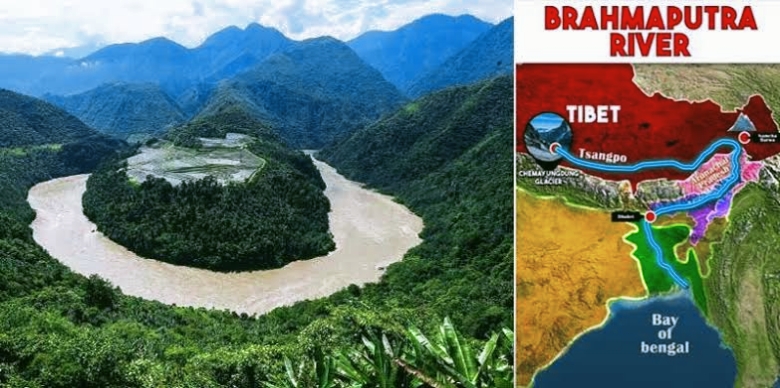In a significant move with deep geopolitical and environmental implications, China has begun construction of a massive hydropower project on the Yarlung Tsangpo river in southeastern Tibet, close to the Indian border state of Arunachal Pradesh. The groundbreaking ceremony, held in the Nyingchi region and attended by Chinese Premier Li Qiang, marks the formal launch of what is set to become the country’s largest hydroelectric installation.
Approved by the Chinese government in December 2023, the project comprises five major hydropower stations and comes at an estimated cost of 1.2 trillion yuan (approximately $167.1 billion). Once completed, it is expected to surpass the scale and capacity of the iconic Three Gorges Dam, further underscoring China’s intent to dominate regional water infrastructure.
Strategic and Environmental Concerns
India has raised repeated alarms over the strategic implications of the dam, particularly its potential to alter water flow downstream into the northeastern states and Bangladesh. The lack of any formal water-sharing agreement between India and China only amplifies concerns about unilateral decisions affecting the broader region.
Chief Minister of Arunachal Pradesh, Pema Khandu, described the project as an “existential threat” to indigenous tribal communities living along the Siang river, which is the name Yarlung Tsangpo assumes after entering Indian territory. Khandu warned that China could exploit the dam to release massive volumes of water without prior notice, a tactic he described as weaponising water resources. “This dam has the potential to become a water bomb,” he stated, highlighting the risk of sudden floods across the Siang belt.
Environmentalists and security analysts have also flagged the ecological impact of large-scale hydropower construction in the seismically sensitive and ecologically fragile Himalayan region. The dam’s proximity to the disputed India-China border adds another layer of strategic complexity.
China Downplays Risks, India Readies Response
While Beijing has attempted to reassure its neighbours that the dam is intended primarily for domestic power transmission and energy needs in Tibet, Indian authorities remain unconvinced. Chinese officials insist that the project will not cause adverse effects downstream, but New Delhi has maintained a cautious stance.
India’s Ministry of External Affairs reiterated that the country is closely monitoring developments. In coordination with the central government, the Arunachal Pradesh administration is accelerating the Siang Upper Multipurpose Project—India’s own strategic hydropower initiative designed to enhance regional water security and build resilience against external control of river systems.
“We are fully aware of the implications of this construction and are actively working on countermeasures,” said an official from the external affairs ministry, emphasising the national security dimension of water infrastructure in the Himalayan region.
Geopolitical Tensions Likely to Rise
The timing and scale of China’s dam project are likely to further complicate already tense relations between the two nations, which have witnessed recurring military standoffs along the Line of Actual Control in recent years. While the diplomatic language remains measured, the undercurrents of mistrust are evident.
Observers warn that the absence of transboundary water governance frameworks in Asia leaves room for miscalculation and conflict. As China continues to build dams on rivers that feed into South and Southeast Asia, countries downstream face a strategic dilemma—how to balance ecological sustainability with geopolitical preparedness.
The Brahmaputra dam project thus emerges not only as an engineering feat but also a flashpoint in the evolving power dynamics of the region, with implications that may well extend beyond water and into the core of regional security discourse.



